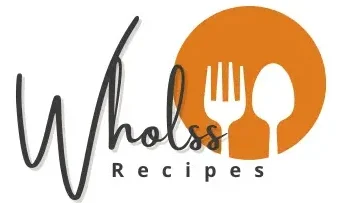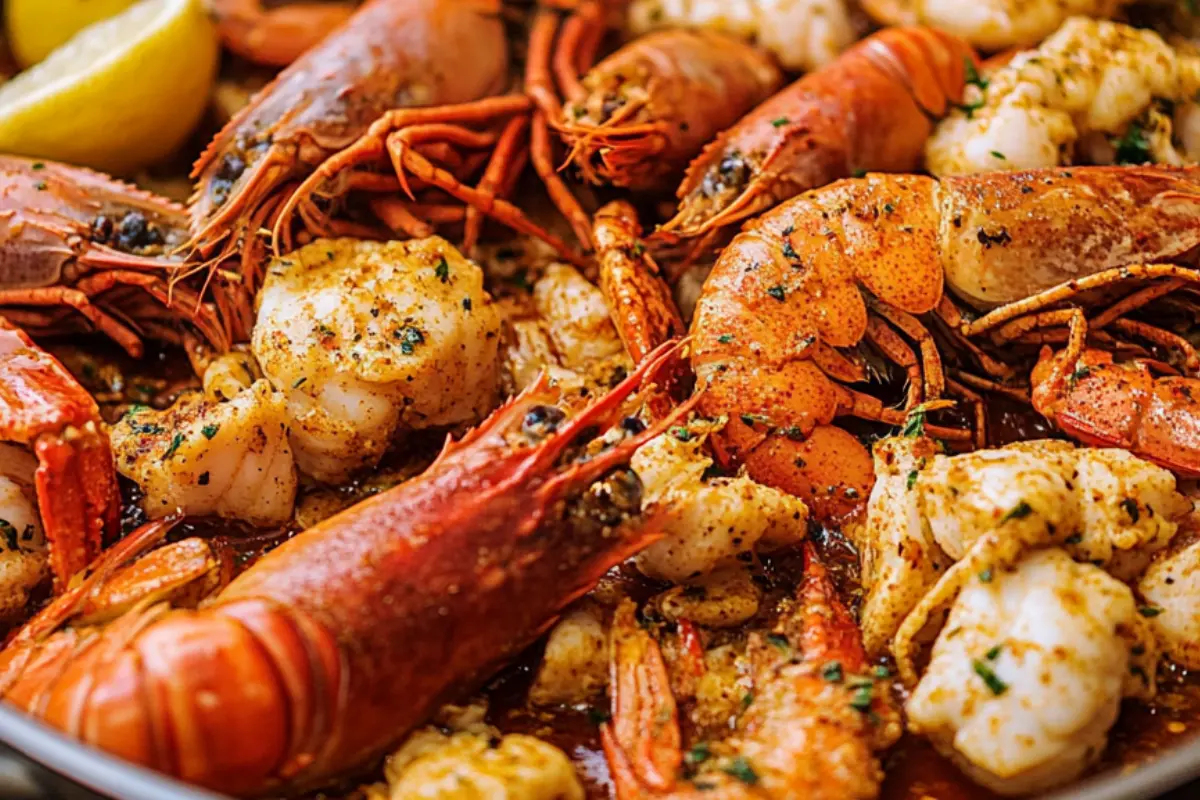Seafood boil sauce is a culinary marvel that takes any seafood feast to the next level. Known for its rich flavors and incredible versatility, this sauce is the secret ingredient that ties together dishes like shrimp, crab, and crawfish. Whether you’re hosting a seafood boil party or simply preparing dinner at home, understanding the essence of this sauce can elevate your cooking game. guide to Cajun cooking basics
Table of Contents
What Is a Seafood Boil Sauce Recipe?
Seafood boil sauce is a flavorful condiment or topping designed to complement the natural taste of seafood. It’s often made with a base of butter and garlic, combined with bold spices like paprika and cayenne, and finished with optional tangy or sweet ingredients. The result is a savory, spicy, or sweet sauce that brings out the best in every bite.
Origin and Popularity of Seafood Boil Sauce Recipe
The roots of seafood boil sauce trace back to the Southern United States, particularly in Cajun and Creole cooking. Over the years, it has gained widespread appeal due to its adaptability and robust flavors. Today, seafood boil sauce is not only a staple in American cuisine but also enjoys popularity worldwide, especially in seafood-loving regions like Asia and the Caribbean.
Types of Seafood Boil Sauces
There’s no one-size-fits-all approach when it comes to seafood boil sauces. Popular variations include:
- Classic Cajun Sauce: Packed with garlic, butter, and Cajun spices for a spicy kick.
- Garlic Lemon Butter Sauce: A lighter option featuring citrusy and buttery notes.
- Asian-Inspired Sauces: Featuring ingredients like soy sauce, ginger, and sesame oil for a unique twist.
Why Seafood Boil Sauce Enhances Your Meal
The right seafood boil sauce can transform an ordinary meal into an extraordinary one. It acts as the flavor bridge that connects seafood’s natural taste with bold seasonings.
Flavor Profiles: Sweet, Spicy, and Savory
Seafood boil sauces offer a diverse range of flavor profiles. Whether you prefer sweet brown sugar notes, fiery spice from cayenne, or the savory richness of butter and garlic, there’s a sauce for everyone. The balance of these flavors enhances the overall dining experience.
Versatility: From Shrimp to Crab to Crawfish
What makes seafood boil sauce so special is its versatility. It pairs effortlessly with a wide range of seafood, including shrimp, crab, crawfish, lobster, and even scallops. Additionally, it works well with vegetables like corn and potatoes, making it a true all-rounder.
Ingredients: The Core Components of Seafood Boil Sauce
The secret to any great seafood boil sauce lies in its ingredients. Let’s break down the essentials.
Key Ingredients: Garlic, Butter, and Cajun Spices
At the heart of any seafood boil sauce are a few indispensable ingredients:
- Garlic: Provides a deep, aromatic flavor.
- Butter: Adds richness and a silky texture.
- Cajun Spices: A blend of paprika, cayenne, and black pepper creates the signature heat and complexity.
Optional Add-Ins: Lemon, Paprika, and Brown Sugar
For those who want to get creative, optional add-ins can help personalize your sauce:
- Lemon: Adds a zesty tang that cuts through the richness.
- Paprika: Boosts color and smoky undertones.
- Brown Sugar: Balances out the spice with a touch of sweetness.
How to Make the Perfect Seafood Boil Sauce
Crafting the perfect seafood boil sauce at home is easier than you think. With the right tools and a step-by-step approach, you can create a flavorful masterpiece to accompany your favorite seafood dishes.
Equipment Needed for Preparing the Sauce
Before diving into the recipe, gather the necessary equipment to ensure a smooth cooking process. Having the right tools makes all the difference when it comes to achieving a consistent and flavorful sauce.
Essential Kitchen Tools: Saucepan, Whisk, and Ladle
- Saucepan: A medium-sized saucepan is perfect for melting butter and combining ingredients evenly.
- Whisk: Essential for mixing spices into the sauce, ensuring a smooth texture.
- Ladle: Handy for serving the sauce directly onto your seafood or into dipping bowls.
Basic Recipe: The Foundation for Any Seafood Boil Sauce
The basic seafood boil sauce recipe is a classic starting point. Once you master this, you can easily adapt it to suit your preferences.
Step 1: Melting the Butter and Infusing the Garlic
Begin by melting a generous amount of butter in your saucepan over medium heat. Once the butter is melted, add minced garlic and cook until fragrant. This process infuses the butter with garlic’s deep, savory aroma, which forms the base of the sauce.
- Pro Tip: Use unsalted butter so you can control the saltiness later.
- Stir constantly to prevent the garlic from burning.
Step 2: Adding Spices and Adjusting for Heat
After the garlic is golden, it’s time to add the spices. Start with paprika, cayenne pepper, and black pepper. Adjust the amount of cayenne based on your desired spice level. Stir continuously to evenly distribute the spices.
- Add a splash of chicken or seafood stock to enhance the sauce’s depth.
- Simmer for 5–7 minutes to let the flavors meld together.
Advanced Variations of Seafood Boil Sauce
Once you’ve mastered the basic recipe, you can explore advanced variations to impress your guests or satisfy your adventurous palate.
Spicy Cajun Variation
For those who love heat, the Spicy Cajun variation is a must-try.
- Use extra cayenne and chili powder for a fiery kick.
- Add a dash of hot sauce for an extra layer of spiciness.
- Finish with chopped parsley for a fresh contrast.
Creamy Lemon-Butter Sauce
This variation is ideal for those who prefer a lighter, tangy sauce.
- Replace some of the butter with heavy cream for a rich, velvety texture.
- Add freshly squeezed lemon juice and zest for a citrusy flavor.
- Garnish with dill or thyme for an herby finish.
Asian-Inspired Seafood Boil Sauce with Soy and Ginger
For an international twist, try this Asian-inspired version.
- Swap out Cajun spices for soy sauce, sesame oil, and grated ginger.
- Add a touch of honey or brown sugar for a balance of sweet and savory.
- Sprinkle sesame seeds and green onions for a stunning presentation.
Perfecting Your Seafood Boil Sauce
Creating the perfect seafood boil sauce requires more than just following a recipe. It’s about understanding the balance of flavors, knowing how to serve it, and avoiding common pitfalls. Let’s dive into the tips, serving suggestions, and common mistakes to help you achieve sauce perfection.
Tips for Balancing Flavors
The hallmark of a great seafood boil sauce is its balanced flavor profile. Whether you prefer it spicy, sweet, or savory, here are some tips to tailor the sauce to your liking.
Adjusting Spice Levels for All Palates
Not everyone enjoys the same level of heat, and striking a balance is key when cooking for a group.
- Mild Heat: Use a smaller amount of cayenne or substitute with smoked paprika for a milder flavor.
- Medium Heat: Stick to the standard cayenne and black pepper ratio in most recipes.
- Extra Spicy: Add chili flakes, hot sauce, or even habanero powder for those who love a fiery kick.
If serving guests, always offer a mild base and provide extra heat options on the side.
Choosing the Right Butter for Richness
Butter is the backbone of seafood boil sauce. The type you use can significantly influence the final result.
- Unsalted Butter: Offers more control over the sauce’s saltiness and is the preferred choice for most recipes.
- Clarified Butter: Provides a cleaner, richer taste and is ideal for dipping sauces.
- Vegan Butter Alternatives: Work well for plant-based variations without compromising flavor.
Serving Suggestions for Seafood Boil Sauce
How you serve your seafood boil sauce can elevate the dining experience. Presentation and pairing are just as important as the sauce itself.
Pairing with Different Types of Seafood
Each type of seafood has unique characteristics, and certain sauces pair better with specific dishes:
- Shrimp: Works well with garlic butter or spicy Cajun sauces.
- Crab: Complements creamy lemon-butter or herbed variations.
- Crawfish: Pairs beautifully with bold, spicy Cajun sauces.
- Lobster: Ideal with a rich, buttery sauce enhanced by fresh herbs.
Encourage guests to mix and match seafood with different sauces to discover their favorite combinations.
Best Side Dishes to Complement the Sauce
Seafood boil sauce is not just for seafood. Pair it with side dishes to round out your meal:
- Corn on the Cob: Absorbs the sauce for a flavorful bite.
- Potatoes: Roasted or boiled, they soak up the rich butter and spices.
- Bread: Perfect for dipping and mopping up every drop of sauce.
- Vegetables: Grilled zucchini, asparagus, or mushrooms add a healthy and tasty touch.
Common Mistakes to Avoid
Even experienced cooks can make mistakes that impact the quality of their seafood boil sauce. Here’s how to avoid common pitfalls.
Overpowering the Sauce with Too Much Spice
While spice is essential, overdoing it can mask other flavors.
- Always start with less spice and gradually add more, tasting as you go.
- Balance heat with sweetness from brown sugar or honey, or acidity from lemon juice.
Incorrect Sauce-to-Seafood Ratio
Too much sauce can overwhelm the seafood, while too little leaves it underwhelming.
- For every pound of seafood, aim for about ½ cup of sauce.
- Serve extra sauce on the side to allow guests to adjust according to their preferences.
Neglecting to Let the Sauce Simmer
One of the most common mistakes is rushing the process.
- Allow the sauce to simmer for at least 5–10 minutes after adding the spices. This ensures the flavors meld together beautifully.
By following these tips, serving suggestions, and avoiding common mistakes, you’ll create a show-stopping seafood boil sauce every time.
FAQs
Here are some frequently asked questions to address any lingering doubts about seafood boil sauce:
- Can I make seafood boil sauce ahead of time? Yes, prepare the sauce up to two days in advance and store it in an airtight container in the refrigerator.
- How do I reheat the sauce without separating the butter? Reheat gently over low heat, stirring continuously to keep the butter and spices emulsified.
- Can I freeze seafood boil sauce? Yes, it freezes well. Store in a freezer-safe container for up to three months.
- What’s the best way to thicken a thin sauce? Add a cornstarch slurry (cornstarch mixed with water) or reduce it further by simmering.
- Can I make a vegan seafood boil sauce? Absolutely! Substitute butter with vegan margarine or coconut oil and skip any animal-based ingredients.
- What’s the difference between Cajun and Creole seafood boil sauce? Cajun sauces are typically spicier, while Creole sauces often include tomatoes for a tangy twist.
- Can I use olive oil instead of butter? Olive oil works as a substitute, but you may lose some richness.
- How do I prevent the sauce from becoming too salty? Use unsalted butter and low-sodium stock, adjusting the salt at the end.
- Can I use pre-mixed Cajun seasoning? Yes, but taste and adjust since pre-mixed blends vary in saltiness and spice levels.
- What’s the best way to serve the sauce at a party? Keep it warm in a small slow cooker or warming tray, and provide ladles for easy serving.

